
When Walt Disney was producing the animated feature film Sleeping Beauty, he realized that a great way to publicize the “high art” approach of the film as well as address the all the letters that flooded into the studio from young artists interested in animation would be to put together a traveling exhibit showcasing the history of animation as well as how animation was done.
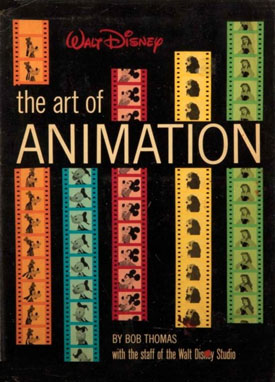 Walt Disney created an exhibit showing the history and development of animation. He used elements from the film itself to explain the actual animation process. The traveling exhibit was entitled “The Art of Animation: A Walt Disney Retrospective.”
Walt Disney created an exhibit showing the history and development of animation. He used elements from the film itself to explain the actual animation process. The traveling exhibit was entitled “The Art of Animation: A Walt Disney Retrospective.”
To put the exhibit together, Walt sent people to the animation “morgue” where the animation art was kept. Walt wanted some specific pieces and it wasn’t just cel setups but backgrounds, concept art, story sketches, and more. There were three versions of this exhibit and each featured different original art.
One was showcased in Tomorrowland at Disneyland from May 28, 1960 to September 5, 1966. The exhibit in Tomorrowland featured early optical devices like thaumatropes and a zoetrope, as well as TV screens showing segments from “The Art of the Animated Drawing” first shown on Walt’s weekly television show on November 11, 1955.
The exhibit was connected to the Art Corner where future animators could purchase “How To Draw” Disney character books, flip books, and even an animation kit with a pressboard light table with pegs and punched animation paper.
Of course, young artists could also buy original Disney cels for a dollar and a half thanks to the ingenuity of Disney Legend Jack Olsen who was in charge of this merchandise location, and who determined that guests might like cels that were just being tossed into the dumpster at the Disney Studio.
There were two other traveling versions of the exhibit that toured the United States beginning in 1958 and then one was sent to be shown in Europe and the other to Japan in 1960 to once again promote the release of Sleeping Beauty in those countries.
The Japanese exhibit was originally displayed at 17 department stores throughout Japan, a common practice since Japanese department stores often sponsored fine art exhibits. When the exhibit finished its tour, it was moved to the National Museum of Modern Art in Tokyo when the Disney Studio was convinced to donate the exhibit to the museum.
However, sometime in 1962, the museum—like many museums—found itself cramped for storage space, and donated the art to Chiba University for educational and research purposes.
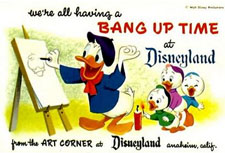 Prof. Hidesaburo Genda asked the museum to donate the original works to Chiba University. Genda had already started research in computer graphics and hoped to use the artwork as a foundation for future work.
Prof. Hidesaburo Genda asked the museum to donate the original works to Chiba University. Genda had already started research in computer graphics and hoped to use the artwork as a foundation for future work.
The fact that the faculty’s building, then in Matsudo, Chiba Prefecture, had a storage facility large enough to hold the great volume of the original works also prompted the museum to donate to them. However, after the faculty moved to its current campus in Chiba in 1967, only a limited number of officials at the university were aware of the existence of the art.
As the years went on, it was not widely known that the art existed. A few university staff members used it for research, primarily Professor Genda and his protege the late Professor Shigeru Oe. When Genta retired in 1982, the materials remained in storage and were forgotten.
They were rediscovered in 2004 by Chiba University in a dusty storeroom in the university’s Faculty of Engineering building. The University contacted Erika Nakajima, director of Corporate Communications for Disney Japan.
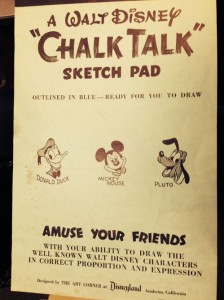 After seeing the lost treasures, Nakajima contacted Lella Smith, Director of the Animation Research Library in California, who immediately jumped on a plane to verify the treasure trove of artwork from 1928-1959.
After seeing the lost treasures, Nakajima contacted Lella Smith, Director of the Animation Research Library in California, who immediately jumped on a plane to verify the treasure trove of artwork from 1928-1959.
It included art from the Silly Symphony Flowers and Trees as well as work from Snow White and Sleeping Beauty. There were Mary Blair concept sketches for Peter Pan, Cinderella, and Alice in Wonderland. There was an elaborate full-color background painting by Eyvind Earle.
The collection included close to 250 pieces of original Disney art done by legends like Eyvind Earle, Mary Blair, the Nine Old Men as well as art from the ending of Sleeping Beauty that had been missing from the Animation Research Library for decades.
Some of the artwork had sustained damage over the years. Apparently at one point, some of the art had been glued down with rubber cement. The restoration was done by fine art restorer Kikuko Iwai, who had worked on the restoration of Vincent Van Gogh’s “Sunflowers” and Claude Monet’s “Waterlilies.”
However there wasn’t as much damage as might be suspected. For the most part the colors were still vibrant. Officials believe the good condition of the artwork is due to the fact that they were kept in a laboratory building between 1967 and 2002 (when the building was demolished as part of a renovation project). The laboratory was a temperature- and humidity-controlled environment, and lighting was also subdued.
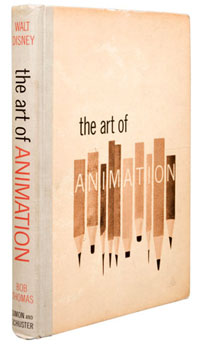 Once the art was restored and combined with artwork from the Animation Research Library (ARL) collection and loans from the Disney Archives and Walt Disney Imagineering, there were more than 550 pieces, making it the largest exhibition of Disney animation art ever—entitled The Art of Disney on display at the Museum of Contemporary Art in Tokyo from July 15 through September 24 in 2006.
Once the art was restored and combined with artwork from the Animation Research Library (ARL) collection and loans from the Disney Archives and Walt Disney Imagineering, there were more than 550 pieces, making it the largest exhibition of Disney animation art ever—entitled The Art of Disney on display at the Museum of Contemporary Art in Tokyo from July 15 through September 24 in 2006.
In addition, to support the original touring exhibit as well as Sleeping Beauty, Walt had writer Bob Thomas put together a book entitled The Art of Animation. The Art of Animation book shown on the TV show “The Story of the Animated Drawing” was a mock-up and frustrated would-be animators who tried to search for the book.
For years there had been discussions at the Disney Studio of using art instructor Donald Graham’s notes when he taught at the Disney Studios along with notes from various sessions conducted by top Disney animators to create such a book. Bob Thomas utilized those resources to create an accurate look at the process of animation that would be accessible to the general public.
A dust-jacketed version was released by Simon and Schuster in 1958 and later, an edition without a dust jacket, but with a black cover with brightly colored illustrations instead, was released by Golden Press. This later edition is the one most commonly found in collections. It was the first Disney book to give official credit to other artists including featuring a photo identifying the famed “Nine Old Men.” Decades later Thomas updated the book but it never truly matched the original edition for technical information about the process of animation.

Here is a copy of the Disneyland Art Corner Catalog from 1956 to give you a taste of what an aspiring young Disney animator might be able to purchase at Disneyland or through the mail. (Special thanks to Jed Blaugrund of Vintage Disneyland Goodies. Click thumbnails below to enlarge)





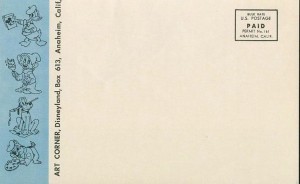



 Jim Korkis is an internationally respected animation historian who in recent years has devoted his attention to the many worlds of Disney. He was a columnist for a variety of animation magazines. With his former writing partner, John Cawley, he authored several animation related books including The Encyclopedia of Cartoon Superstars, How to Create Animation, Cartoon Confidential and Get Animated’s Animation Art Buyer’s Guide. He taught animation classes at the Disney Institute in Florida as well as instructing classes on acting and animation history for Disney Feature Animation: Florida.
Jim Korkis is an internationally respected animation historian who in recent years has devoted his attention to the many worlds of Disney. He was a columnist for a variety of animation magazines. With his former writing partner, John Cawley, he authored several animation related books including The Encyclopedia of Cartoon Superstars, How to Create Animation, Cartoon Confidential and Get Animated’s Animation Art Buyer’s Guide. He taught animation classes at the Disney Institute in Florida as well as instructing classes on acting and animation history for Disney Feature Animation: Florida.




















































Thanks! I have both “The Art of Animation” and the Donald Duck cell I purchased at the Art Corner as a youngster on my first visit to Disneyland.
I have the “Beauty and the Beast” version of “The Art of Animation” book. I hope someday to find the original 1958 version.
I have the Beauty and the Beast one too! One of my most personally cherished books for over 20 years, but I never realized its historical importance.
I always had the impression that it would be a yearly thing, and would have eagerly bought more copies, but have only found one other (Pocahontas cover, I think?)
Jim–what a great/informative post (as usual). Thanks for sharing your love of all things Disney!
The original book — with dust jacket — was a repeated checkout at our local library. Besides the fascinating info, I was just at an age where Princess Aurora looked hot.
Also remember those postcards with the little lenticular things pasted on. The things were also sold separately with a little hole punched in the corner and one of those little toy bracelet/keychain chains.
“Story of the Animated Drawing” is still an all-time favorite Disneyland hour. Walt holds up a book about animation and says it’s coming soon; did that project morph into “Art of Animation”?
““Story of the Animated Drawing” is still an all-time favorite Disneyland hour. Walt holds up a book about animation and says it’s coming soon; did that project morph into “Art of Animation”?
Technically yes.
I was lucky enough to have parents that took me to the original 1958 exhibit in San Francisco, and bought me the book, which I still have. I amazed my friends with home-movie cartoons, and I think that book led to my long career as a film editor here in Los Angeles. Thanks Walt and company!
$1.47 for an original production cel from Lady & the Tramp? Highway robbery!!!!
I recall Thomas sort of “plug” the book in his other book, “Walt: An American Original”.
By the way, is his book about Roy O. Disney worth reading? I’m rather curious about that one.
When I was about 11 or 12, I ran across the book “The Art of Animation” in the mid-sixties at a Goldblatt’s department store. After begging my mom to buy it for me (it cost about $6, if I remember right), she told me if I wanted it bad enough, I should save up to buy it. Back then, it took months to save up $6. As it turned out, I never saw that book again. Later, I ran across a booklet on animation and in the bibliography it listed “’The Art of Animation’ by Walt Disney and Staff.” There was no mention of Bob Thomas. With the info I had, I visited and called used bookstores all over the area, even putting it on watch lists at large store chains, but had no luck. Eventually, my wife bought me the “Beauty and the Beast” edition for Christmas, which was good, but I really wanted the one with drawings and paintings from “Sleeping Beauty.” I’m sure that book is worth a fortune today.
That was a lost opportunity.
Nic Kramer, the Roy Disney book is readable and well researched but tries to be both a biography of Roy and a portrait of the Disney Company becoming a media giant. It ends up being inadequate on both counts. Jim has even made comments about it being a disappointment.
Thanks. Well, that explains why I don’t hear much about this book.
There were several foreign-language editions “The Art of Animaton”. I have the Spanish one, “Maravillas de los Dibujos Animados” (“Wonders of the Animated Cartoons”), which I got at the tender age of 10, and which I still have it. Of course, it enhanced greatly my passion for animaton, and I know of other people that, having also read this book when they were younger, it triggered on them the wish to follow a career in animation.. Published in 1968 (ten years after the original American edition) this Spanish version can still be found on eBay at reasonable prices; other international editions of “The Art of Animation” include French and Italian.
Thanks for clarifying the chronology of the two versions of the original 1958 _Art of Animation_! I have the Golden Press edition with the glossy covers, and obviously will now have to search for the earlier Simon & Schuster version. One correction, though: my copy of the Golden Press edition has a dust-jacket that matches the colors and design of the cover, and I’ve seen others on the market. The dust-jacket is hard to find in good condition, but it’s not rare.
Today I ran across your article by typing Disneyland Art Corner Walt Disney Animation Kit, It was great, brief, overview. It allowed me to relive my history with facts I know which you recounted to me accurately.
I worked as a page in our small library. I bought the Simon Shuster Art of Animation Hard Cover book with Dust Cover, with librarian authoration through purchasing. I kept as part of my Disney collections. The Beauty and Beast update to me was interesting to review new animation accomplishments post Xerox and into computer, cell-less, animation.
I personally sent away for the Animation Kit from Disneyland Art Corner(never found any mention of it.until now) It came in a large box, included pressboard plexiglass peg board,to be mounted on green triangular sides, to allow for gooseneck lamp under desk top to allow tracing of animation images,and 1-2 reams 3 punched out paper various animation manuals including,animating characters(similar to Goofy illustration you used) animation timing sheets, and pluto flip book, and various mailer list to order more stuff. I tried it out for single frame stop motion movie camera. It became more complicated than I impatiently dreamed, so I put it away with my beginning Disney collection suitcase. I still have the whole Kit with an empty paper ream and dream of using it, with age and patience to understand what was complicated, boring at my younger age..
And further personal nostalga, I attended the Art of Animation exhibit at the Walker Art Museum, and purchased the brochure with cave painting of running “boar” and it include a strip of actual film from Sleeping Beauty.
Green sides, lol yep, that is just like the sides from animation board in the Disney’s Animation Kit I just put on Ebay(12/1517) The book in this article as shown above was originally in there when you bought it right? Mine is missing both character books and only has the 15 page “Tips on Animation” book, but it had two in the kit when I came across it…lucky me??? .
Dear Ken D. How much will you sell me your Animation kit for? What year did you buy it? How many How to Draw books are in it, and which characters? Are the booklets staple bound or spiral bound? I once owned the kit, too. It was given to me for my birthday in Dec., 1956, with 4 of those $1.47 cells. I suffered the same impatience you describe, and put it away. I must have kept it for another 5 years before throwing it away. The cels are gone, too. Thus ended my dreams of one day working for the Walt Disney Studio. But there is a unique button to the story: I decided to work in TV, instead, first as a cameraman and then as an audio man. In 1968 I got a permanent job at ABC-TV. And about thirty years later, guess who bought ABC-TV? I wound up working for DIsney after all! But I always regretted dumping my Walt Disney Animation kit!
I have a sketch pad for sale 1950 s
I have a Disney’s Animation Kit available on Ebay right now 12/18/17. It is incomplete, but does have the animator board/desk, the 15 page Tips On Animation book, 7 page Information on Disney Studios pamphlet, 3 page Animation terms pamphlet, 1 unused flip book, Art Corner Membership Postcard, and of course the original box. It would give you a great start to completing your collection. If you love it let me know by asking a question on the Ebay listing. There is an ask the seller a question icon or box at the bottom of the page. Cheers!
I have a Chalk Talk Sketch Pad, amuse your friends. 17 x 22
I can’t find a value 🙂
where can i find this book online?